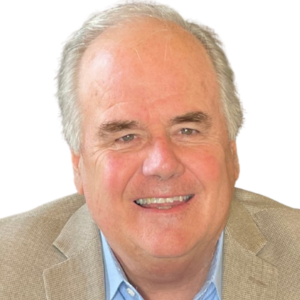Improve Quality? Watch What Staff Is Doing
|
| by Anna Rahman, MSW; Sandra Simmons, PhD; John F. Schnelle, PhD |
It’s a mundane exercise but sometimes an eye-opening experience: The nursing supervisor stands in the facility’s dining room, clipboard in hand. Her instructions are straightforward: Focus attention on five to ten residents who have been deemed at risk for weight loss. Throughout the meal, observe and record whether each of these residents receives from the staff:
Finally, record how much of the meal each resident consumed, then compare this with the nurses’ aide’s or feeding assistant’s estimate of the resident’s consumption. The point of the exercise? Its overarching objective is to improve feeding assistance for residents at risk of weight loss and thereby increase their mealtime food and fluid intake. The supervisor is on the lookout for staff behaviors-physical assistance, verbal prompts, and social stimulation-that have been shown to increase mealtime consumption. But that’s just the beginning. Direct observations of nursing home care accomplish several goals simultaneously, which is why this strategy is such a powerful tool for not only evaluating care but also improving it. Indeed, we at the Borun Center for Gerontological Research recommend direct observation as one of the most effective strategies for improving nursing home care. And heads up: The Centers for Medicare & Medicaid Services (CMS) is evaluating the benefits of using standardized observations in the nursing home survey process. What is it about the act of directly observing care that makes it such a compelling component of nursing home quality improvement efforts? |
| Table. The G-Z Building’s expanded list of staff behaviors that characterize quality feeding assistance |
| The Powers of Observation Consider again the dining room example. Performed weekly, this monitoring exercise accomplishes several goals, all of which sup-port the ultimate objective of improving feeding assistance:
For all these reasons, direct observations of selected care routines can help your facility improve service delivery and enhance residents’ quality of life. “With direct observations, you see quality improvement in the staff right away because they want to please you,” says Community Manager Susan Leitch, who conducts biweekly mealtime observations at the Jewish Home for the Aging’s Goldenberg-Ziman Special Care Center (the G-Z Building) in Reseda, California. Adds Acting Executive Director Laurie Manners, the observations also help the staff “see the results of their labor and they become better employees.” In our experience, the G-Z Building is exceptional. Few facilities regularly conduct direct observations, and fewer still use-as the G-Z Building does-standardized observational protocols that are reliable and scientifically defensible. But it’s never too late to change and, in this case, change is a few steps away. Read on. Select and Standardize Observations The clinical significance of this insight cannot be overestimated: Studies have shown that excessive time in bed is associated with such detrimental outcomes as undernutrition, pressure ulcer development, pneumonia, and urinary incontinence. Other aspects of daily care that are both easy to observe and either clinically significant or important from a quality-of-life standpoint are:
Because direct observations can be time consuming to conduct, we do not recommend them when the care routines in question occur sporadically throughout the day, such as incontinence care and repositioning. They are most feasible when the targeted routines or behaviors are expected to occur within a specific period in a known place, such as at mealtimes, bedtimes, or during morning and afternoon social activities. On these occasions, a staff supervisor can stand ready, checklist in hand, to witness and record elements of usual care. The checklist is important. To be reliable, observations-and thus care routines-should be broken down into discrete, well-defined components so that two or more observers viewing the same scene reach identical or nearly identical assessments. In the dining room example, observers are asked to distinguish between verbal prompts to eat and social stimulation. To help standardize this distinction, the checklist provides an example of each: “Pick up your spoon and take a bite” versus “How are you today?” For best results, observers should focus their attention on a limited number of care-process components. Too many of these, and the exercise becomes impractical. Clinical-practice guidelines, expert consensus, and professional judgment should determine which components are selected. For the dining room checklist, a literature review identified verbal prompts, social stimulation, and physical assistance as indispensable components of a high-quality feeding assistance program. When the G-Z Building adopted this observation protocol, it expanded it, based largely on the supervisors’ expectations for quality care (see table). Although the checklist grew longer, observations were still feasible to conduct. The observation protocol’s design should also reduce reactivity-that is, the tendency of staff members to change their behavior when under observation-by minimizing the obtrusiveness of the observers. One way to do this is to focus observations on the residents rather than on the staff. Let it be known that the supervisor is observing whether particular residents who need or want a certain service are receiving it, and that this is not a staff entrapment exercise. Establish Interpretive Rules Like the selection of care-process components, interpretive rules should be determined based on clinical-practice guidelines, expert consensus, and professional judgment. Examples of additional interpretative rules for mealtime feeding assistance components are available (see “Observation Form Available From Borun Center Web Site”). |
| Observation Form Available From Borun Center Web Site The Borun Center’s Web site (https://borun.medsch.ucla.edu) offers free access to six training modules on improving daily care in nursing homes:
The weight loss prevention module, in the Web site’s “Forms” section, includes a mealtime observation form. This form includes rules for translating observations into consistent conclusions. To access this form directly, key in: https://borun.medsch.ucla.edu/modules/Weight_loss_prevention/wlformsQImeals.pdf. |
| Consider Timing and Offer Feedback How often should supervisors conduct standardized observations of a particular care routine? The answer varies according to the facility’s objective. An annual observation conducted on a few consecutive days can serve as an audit of a particular care routine. This audit answers the question, “Are there components of this care process that need improvement?” But sometimes, more frequent observations are called for. A facility planning to implement an improvement program, for example, may want to conduct pre- and post-intervention observations as a means of evaluating the program’s effectiveness. In the “Cadillac” model, like that used in the G-Z Building, supervisors conduct regular, often weekly, observations of a particular care routine to reinforce and sustain positive staff behaviors, which in turn affect resident outcomes. Regardless of the timing, supervisors should report findings from their observations to the staff involved with care delivery (a 15-minute conference may suffice; make sure to emphasize the positive outcomes). Such feedback facilitates desired changes in staff behaviors. Your Turn The authors are faculty and staff of the Borun Center for Gerontological Research, a joint program of the UCLA School of Medicine and the Jewish Home for the Aging of Greater Los Angeles. For further information, visit the Borun Center’s Web site at www.borun.medsch.ucla.edu. To send comments to the authors and editors, please e-mail rahman0606@nursinghomesmagazine.com. |
I Advance Senior Care is the industry-leading source for practical, in-depth, business-building, and resident care information for owners, executives, administrators, and directors of nursing at assisted living communities, skilled nursing facilities, post-acute facilities, and continuing care retirement communities. The I Advance Senior Care editorial team and industry experts provide market analysis, strategic direction, policy commentary, clinical best-practices, business management, and technology breakthroughs.
I Advance Senior Care is part of the Institute for the Advancement of Senior Care and published by Plain-English Health Care.
Related Articles
Topics: Articles , Staffing











